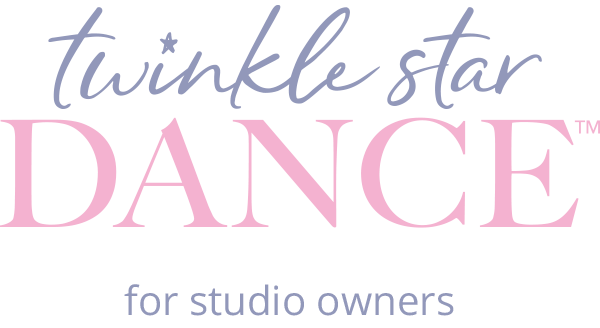Dance Studio Owner Covid Survival Story
Why Studio Owner Quit Dance Competitions
Dance Teachers Are Essential: The Power of Dance in Whole-Child Development
As dance educators, you are doing far more than teaching steps and routines. You are shaping brains, hearts, and bodies in ways that last a lifetime. Dance is a uniquely powerful tool for growth because it integrates movement, music, and social connection, making it a multi-sensory positive experience. Here’s how your role as a teacher fuels development across every dimension of a child’s life.
Brain Development and Dance: A Multi-Sensory Brain Boost
Every time your students dance, they are strengthening their brains.
Neural Connections: Dance links movement, rhythm, and memory, creating strong neural pathways that support lifelong learning.
Executive Function & Creativity: From following choreography to improvising, students sharpen planning, flexibility, and creative problem-solving.
Theory of Mind: Performing and working in groups helps dancers understand perspectives outside their own building empathy through movement.
Dance isn’t just art, it’s cognitive training at its finest.
Character Development and Dance: A Shared Social Experience
The studio is a safe and vibrant space where children build essential character strengths:
Perseverance: Every plié, pirouette, or leap is practice in trying again and again until mastery comes.
Bravery: Stepping into the classroom, performing, or learning something new all require courage.
Self-Regulation: Dance teaches listening, patience, and focus all key life skills.
Kindness: From taking turns to encouraging peers, dancers learn cooperation and respect.
Your guidance nurtures not just skilled movers, but strong and compassionate human beings.
Physical Development and Dance: Building Strong Bodies
Dance uniquely supports whole-body development, giving children confidence in their physical abilities.
Flexibility & Balance: Core elements of every class improve posture and agility.
Muscle Development: Repetition builds strength while keeping movement fun and engaging.
Body & Spatial Awareness: Dancers learn to move with control and confidence in any environment.
These skills support not only dance but also play and everyday movement.
Why Dance Teachers Are Essential
As a dance teacher, you are so much more than an instructor of steps. You are a brain builder, a character coach, a fitness leader, and a mentor. Each time you lead a class, you’re giving children an experience that supports their cognitive, emotional, and physical growth while sparking joy through the art of dance.
Never underestimate your impact. You are essential.
Why Continuing Education and Teacher Training Are Essential for Dance Studios and Educators
In the fast-paced and ever-evolving world of dance, staying current isn’t a luxury—it’s a necessity. For studio owners and dance educators, the commitment to ongoing education and teacher training is not just about refining technique. It's a powerful investment in the overall health and growth of your studio, your team, and your dancers.
Here’s why continuing education should be a core pillar of your studio’s culture—and how everyone benefits.
1. Elevating the Teacher: Confidence, Credibility, and Creativity
Great teachers never stop learning. Whether it's mastering new styles, understanding child development, or staying current with injury prevention practices, continuing education keeps instructors sharp and inspired.
Benefits for the teacher:
Increased Confidence: With updated knowledge and tools, instructors feel more equipped to handle a wide range of student needs and classroom situations.
Professional Credibility: Teachers who pursue certifications and attend workshops stand out as committed professionals, earning trust from students and parents alike.
Renewed Creativity: Exposure to fresh techniques, music, and teaching methods reinvigorates lesson planning and choreography, helping prevent burnout.
2. Strengthening the Studio: Reputation, Retention, and Revenue
For studio owners, investing in teacher development sends a clear message: this is a place where mastery matters. It’s a smart strategy for building a strong, sustainable business.
Benefits for the studio:
Enhanced Reputation: Studios known for highly trained, passionate instructors attract and retain more families.
Staff Retention: Offering professional development shows your team that you value their growth, fostering loyalty and reducing turnover.
Financial Growth: Better-trained teachers create more engaging classes, leading to higher student retention, increased enrollment, and greater word-of-mouth referrals.
3. Empowering the Dancer: Technique, Safety, and Inspiration
At the heart of every studio is the student. When teachers are well-trained and up-to-date, students benefit in every way—on and off the dance floor.
Benefits for dancers:
Stronger Technique: Teachers with current training can better identify and correct weaknesses, leading to more technically sound dancers.
Injury Prevention: Understanding anatomy, proper alignment, and safe progression is critical to keeping dancers healthy and in class.
Deeper Motivation: Students thrive when taught by passionate, knowledgeable instructors who challenge and inspire them.
Creating a Culture of Growth
Making professional development a priority doesn’t have to be overwhelming. Here are a few simple ways to start:
Offer stipends or reimbursements for workshops and certifications.
Host in-studio training sessions or bring in guest educators.
Encourage staff to attend conferences like Pinnacle Dance Conference and Retreat.
Subscribe to reputable dance education platforms and journals.
Set annual goals for team-wide training and personal development.

